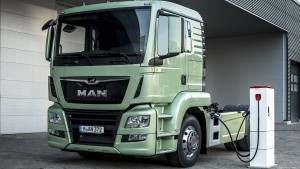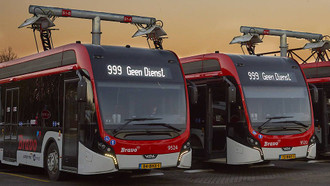M sometimes things just take a bit longer. Electromobility is an example. The topic has been going through the railroad for decades. But in road-bound traffic – that lasts.
![]()
Now it seems that the electric car will prevail, at least in the medium term, and slowly, but steadily, the electric (city) bus sneaks into public life. There are more than 50 buses in London without an internal combustion engine, which is the largest fleet in Europe. And since December 2016, the Dutch city of Eindhoven has been using only electric buses. The three-axle, almost 20-meter-long giants from the manufacturer VDL together offer more space than the London Armada, although there are only 43 units. Nevertheless, the purely electric bus is just beginning. But he is further than some might believe. In well over 20 German cities Stromer are rolling across the streets, even on Sylt. In Regensburg, the old town has recently been served by smaller e-buses. These come from Italy, and, coincidence of course, on the first day one of the five vehicles had to be towed.
This exemplifies the general teething troubles. The problems are the same as in the car. An electric bus is much more expensive than a conventional one, so 500 000 to 750 000 instead of 250 000 to 350 000 depending on size, this must be invested considerable sums in the infrastructure. The traffic planners must decide whether to temporarily charge their vehicles during the short stops (opportunity charging) or in the evening in the depot. For both, large amounts of energy are needed, in the interim charging 300-400 kW in the short term in the depot longer term, but the sheer number of a pure electric fleet of a larger city with about 100 to 200 units might be a challenge for the power grid.
For a range of 150 to 200 kilometers, you need a thumbs-up, 200 kWh batteries. By comparison, the largest Tesla has 100 kWh. Will or have to drive on, are the state of the art fuel cell buses that fill up hydrogen, but also purely electric drive, or hybrid applications needed. The Daimler Group, Germany’s market leader in buses with its Mercedes-Benz and Setra brands, has so far focused more on this area. The group has extensive experience with electric bus drives, including various fuel cell projects. A small series of about 100 hybrid buses with serial drive came and is used in cities such as Stuttgart, Dresden, Karlsruhe or Hamburg. This can drive a short distance purely electric. The buses offered by the other manufacturers are often parallel hybrids, which do not allow purely electric drive, the electric motor only supports the diesel engine. The parallel hybrid is the “hybrid” – the serial hybrid appears as a useful bridge technology. Other well-known manufacturers such as Iveco rely on this (intermediate?) Solution. The Italians with their German branch in Ulm have large fleets circulating in Dijon and Milan, with 220 or 120 vehicles.
It is noticeable that the electric bus many rather unknown or smaller manufacturers try their luck. Heinz Friedrich, responsible for Mobility Solutions at Daimler Bus, explains this with the fact that many companies make use of the diverse range of suppliers. Often available batteries and propulsion technology would be combined into pilot fleets, but these fleets still showed insufficient vehicle availability for professional use in daily operations. Daimler Bus wants to put an electric bus on the road, which has the maturity of a production vehicle and is available to the transport companies without downtime. The presentation and delivery of the vehicle should take place in 2018.

